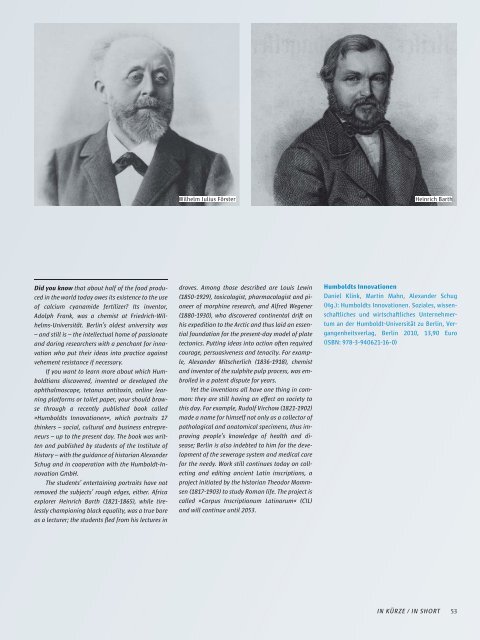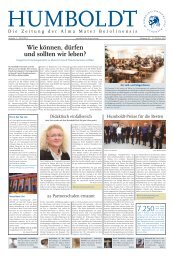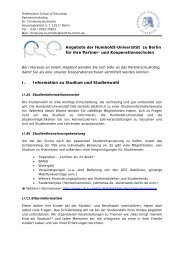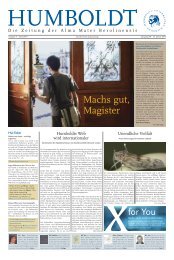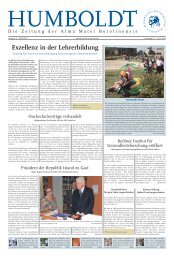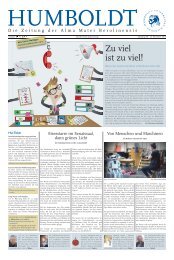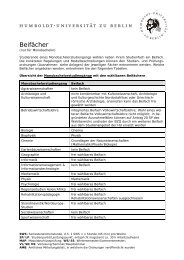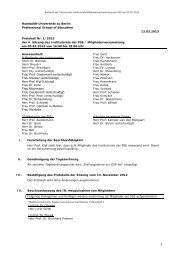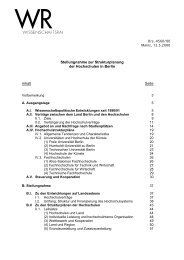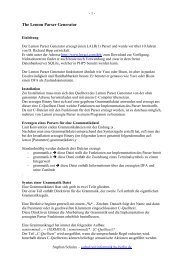hu wissen 1 (pdf) - Humboldt-Universität zu Berlin
hu wissen 1 (pdf) - Humboldt-Universität zu Berlin
hu wissen 1 (pdf) - Humboldt-Universität zu Berlin
Erfolgreiche ePaper selbst erstellen
Machen Sie aus Ihren PDF Publikationen ein blätterbares Flipbook mit unserer einzigartigen Google optimierten e-Paper Software.
Wilhelm Julius Förster<br />
Heinrich Barth<br />
Did you know that about half of the food produced<br />
in the world today owes its existence to the use<br />
of calcium cyanamide fertilizer? Its inventor,<br />
Adolph Frank, was a chemist at Friedrich-Wilhelms-Universität.<br />
<strong>Berlin</strong>’s oldest university was<br />
– and still is – the intellectual home of passionate<br />
and daring researchers with a penchant for innovation<br />
who put their ideas into practice against<br />
vehement resistance if necessary.<br />
If you want to learn more about which <strong>Humboldt</strong>ians<br />
discovered, invented or developed the<br />
ophthalmoscope, tetanus antitoxin, online learning<br />
platforms or toilet paper, your should browse<br />
through a recently published book called<br />
»<strong>Humboldt</strong>s Innovationen«, which portraits 17<br />
thinkers – social, cultural and business entrepreneurs<br />
– up to the present day. The book was written<br />
and published by students of the Institute of<br />
History – with the guidance of historian Alexander<br />
Sc<strong>hu</strong>g and in cooperation with the <strong>Humboldt</strong>-Innovation<br />
GmbH.<br />
The students’ entertaining portraits have not<br />
removed the subjects’ rough edges, either. Africa<br />
explorer Heinrich Barth (1821-1865), while tirelessly<br />
championing black equality, was a true bore<br />
as a lecturer; the students fled from his lectures in<br />
droves. Among those described are Louis Lewin<br />
(1850-1929), toxicologist, pharmacologist and pioneer<br />
of morphine research, and Alfred Wegener<br />
(1880-1930), who discovered continental dri on<br />
his expedition to the Arctic and t<strong>hu</strong>s laid an essential<br />
foundation for the present-day model of plate<br />
tectonics. Putting ideas into action oen required<br />
courage, persuasiveness and tenacity. For example,<br />
Alexander Mitscherlich (1836-1918), chemist<br />
and inventor of the sulphite pulp process, was embroiled<br />
in a patent dispute for years.<br />
Yet the inventions all have one thing in common:<br />
they are still having an effect on society to<br />
this day. For example, Rudolf Virchow (1821-1902)<br />
made a name for himself not only as a collector of<br />
pathological and anatomical specimens, t<strong>hu</strong>s improving<br />
people’s knowledge of health and disease;<br />
<strong>Berlin</strong> is also indebted to him for the development<br />
of the sewerage system and medical care<br />
for the needy. Work still continues today on collecting<br />
and editing ancient Latin inscriptions, a<br />
project initiated by the historian Theodor Mommsen<br />
(1817-1903) to study Roman life. The project is<br />
called »Corpus Inscriptionum Latinarum« (CIL)<br />
and will continue until 2053.<br />
<strong>Humboldt</strong>s Innovationen<br />
Daniel Klink, Martin Mahn, Alexander Sc<strong>hu</strong>g<br />
(Hg.): <strong>Humboldt</strong>s Innovationen. Soziales, <strong>wissen</strong>schaliches<br />
und wirtschaliches Unternehmertum<br />
an der <strong>Humboldt</strong>-Universität <strong>zu</strong> <strong>Berlin</strong>, Vergangenheitsverlag,<br />
<strong>Berlin</strong> 2010, 13,90 Euro<br />
(ISBN: 978-3-940621-16-0)<br />
IN KÜRZE / IN SHORT<br />
53


